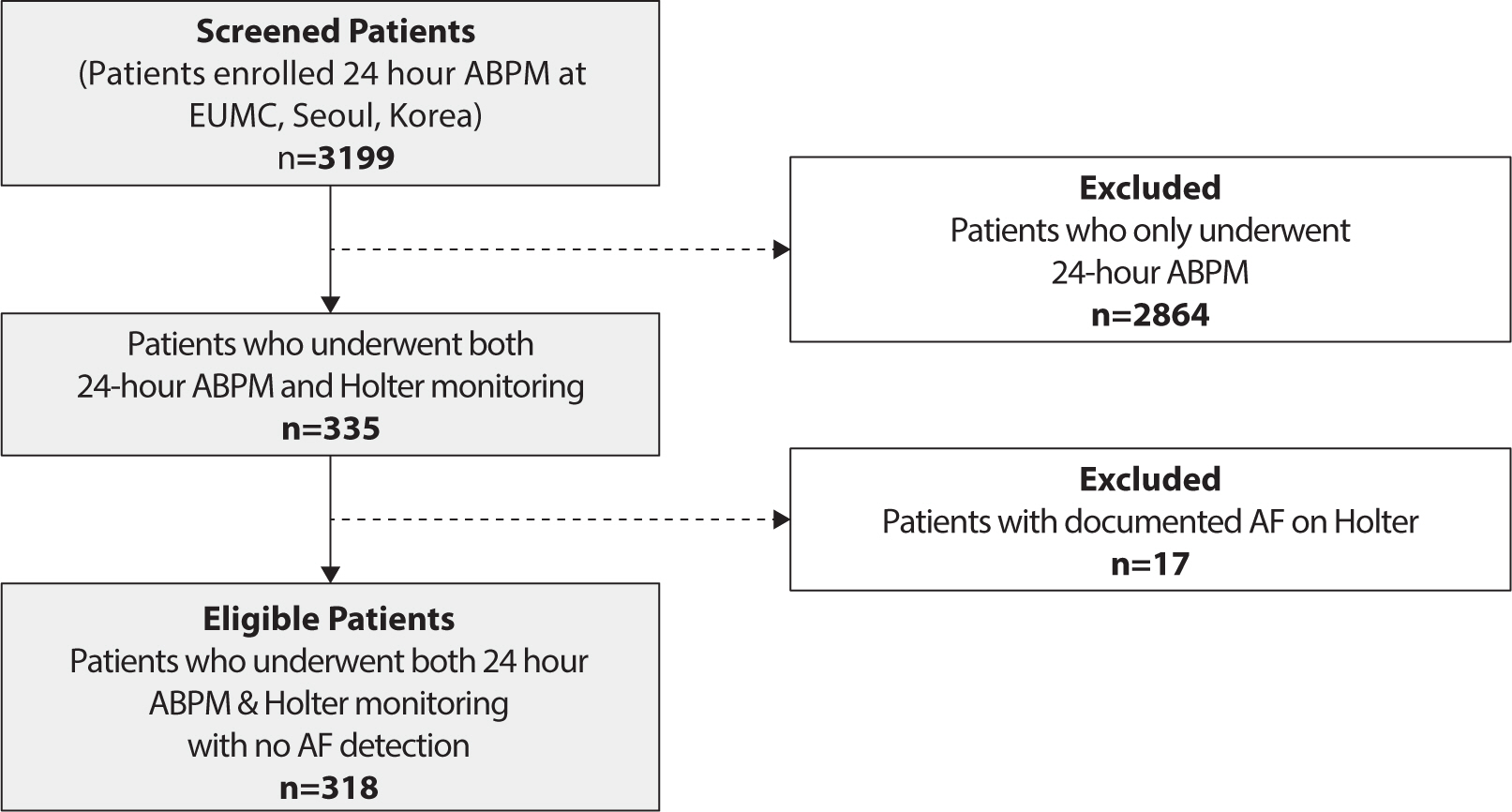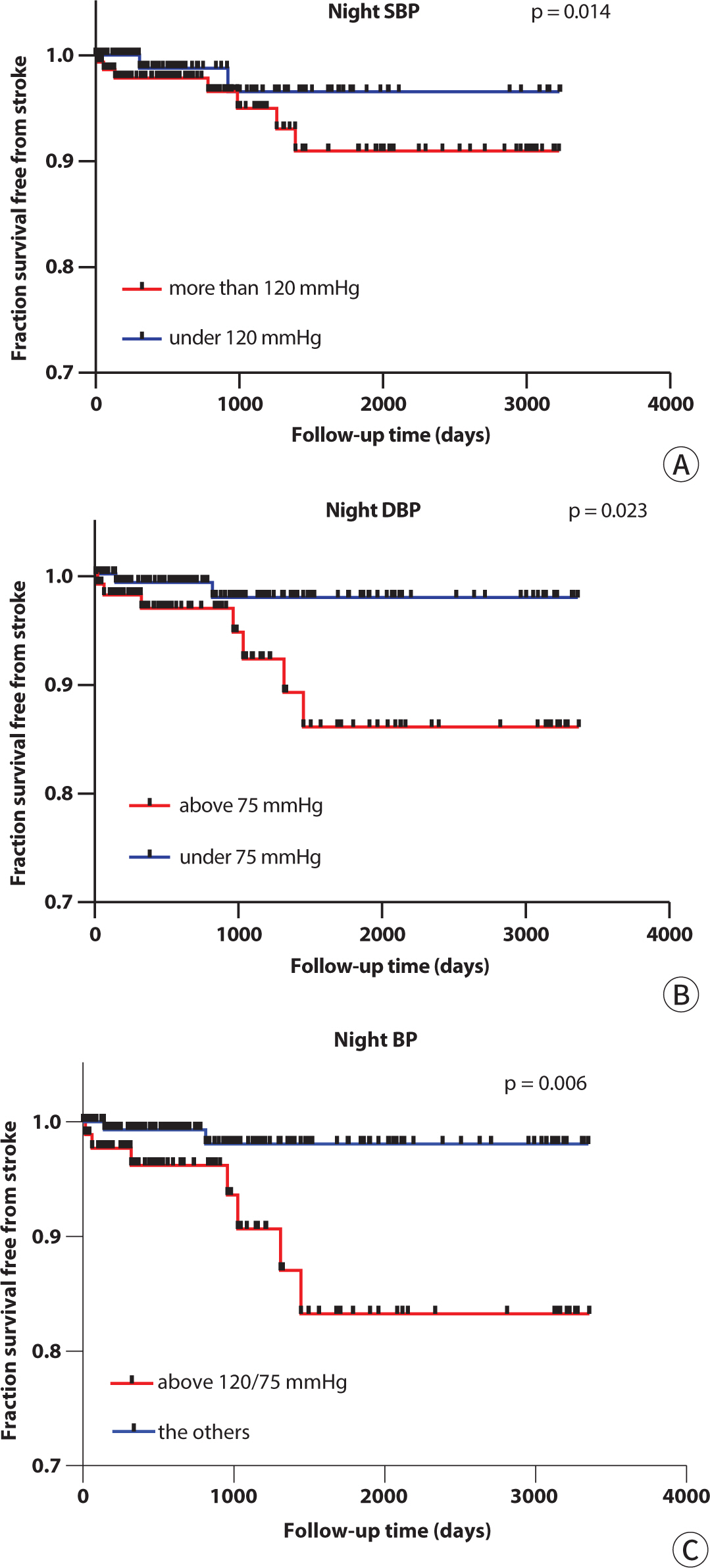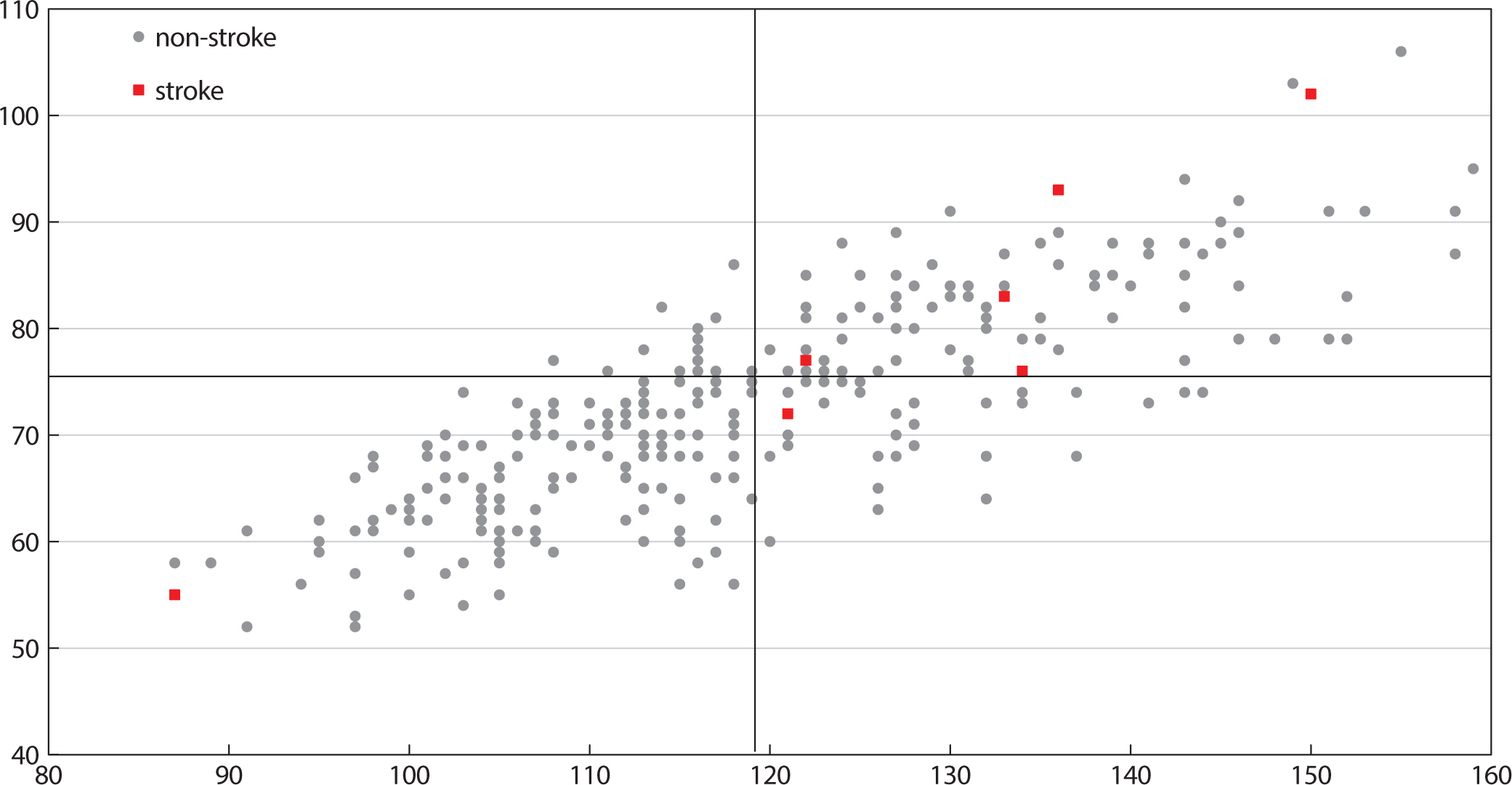1. Pickering TG, Shimbo D, Haas D. Ambulatory blood-pressure monitoring. N Engl J Med. 2006; 354:2368–2374. DOI:
10.1056/NEJMra060433. PMID:
16738273.

2. Eguchi K, Pickering TG, Hoshide S, Ishikawa J, Ishikawa S, Schwartz JE, et al. Ambulatory blood pressure is a better marker than clinic blood pressure in predicting cardiovascular events in patients with/without type 2 diabetes. Am J Hypertens. 2008; 21((4)):443–450. DOI:
10.1038/ajh.2008.4. PMID:
18292756. PMCID:
PMC3881175.

3. Galli A, Ambrosini F, Lombardi F. Holter monitoring and loop recorders: from research to clinical practice. Arrhythm Electrophysiol Rev. 2016; 5((2)):136–143. DOI:
10.15420/AER.2016.17.2. PMID:
27617093. PMCID:
PMC5013174.

7. Nelson BW, Allen NB. Accuracy of consumer wearable heart rate measurement during an ecologically valid 24-hour period: intraindividual validation study. JMIR Mhealth Uhealth. 2019; 7(3):e10828. DOI:
10.2196/10828. PMID:
30855232. PMCID:
PMC6431828.

8. Lewalter T, Boriani G. Relevance of monitoring atrial fibrillation in clinical practice. Arrhythm Electrophysiol Rev. 2012; 1((1)):54–58. DOI:
10.15420/aer.2012.1.54. PMID:
26835031. PMCID:
PMC4711515.

9. Minutolo R, Gabbai FB, Chiodini P, Garofalo C, Stanzione G, Liberti ME, et al. Reassessment of ambulatory blood pressure improves renal risk stratification in nondialysis chronic kidney disease: long-term cohort study. Hypertension. 2015; 66((3)):557–562. DOI:
10.1161/HYPERTENSIONAHA.115.05820. PMID:
26150434.

10. Paoletti E, Bellino D, Amidone M, Rolla D, Cannella G. Relationship between arterial hypertension and renal damage in chronic kidney disease: insights from ABPM. J Nephrol. 2006; 19((6)):778–782.
11. Scheppach JB, Raff U, Toncar S, Ritter C, Klink T, Störk S, et al. Blood pressure pattern and target organ damage in patients with chronic kidney disease. Hypertension. 2018; 72((4)):929–936. DOI:
10.1161/HYPERTENSIONAHA.118.11608. PMID:
30354716.

12. Cho J. Current status and prospects of health-related sensing technology in wearable devices. J Healthc Eng. 2019; 2019:3924508. DOI:
10.1155/2019/3924508. PMID:
31316740. PMCID:
PMC6604299.

13. Wolf PA, Abbott RD, Kannel WB. Atrial fibrillation as an independent risk factor for stroke: the Framingham study. Stroke. 1991; 22((8)):983–988. DOI:
10.1161/01.STR.22.8.983. PMID:
1866765.

14. Kario K, Schwartz JE, Pickering TG. Changes of nocturnal blood pressure dipping status in hypertensives by nighttime dosing of α-adrenergic blocker, doxazosin: results from the HALT study. Hypertension. 2000; 35((3)):787–794. DOI:
10.1161/01.HYP.35.3.787. PMID:
10720596.

15. Perloff D, Sokolow M, Cowan RM, Juster RP. Prognostic value of ambulatory blood pressure measurements: further analyses. J Hypertens Suppl Off J Int Soc Hypertens. 1989; 7(3):S3–S10.
16. Verdecchia P, Porcellati C, Schillaci G, Borgioni C, Ciucci A, Battistelli M, et al. Ambulatory blood pressure. An independent predictor of prognosis in essential hypertension. Hypertension. 1994; 24((6)):793–801. DOI:
10.1161/01.HYP.24.6.793. PMID:
7995639.

17. de la Sierra A, Banegas JR, Segura J, Gorostidi M, Ruilope LM. Ambulatory blood pressure monitoring and development of cardiovascular events in high-risk patients included in the Spanish ABPM registry: the CARDIORISC event study. J Hypertens. 2012; 30((4)):713–719. DOI:
10.1097/HJH.0b013e328350bb40. PMID:
22306850.

18. Boggia J, Li Y, Thijs L, Hansen TW, Kikuya M, Björklund-Bodegård K, et al. Prognostic accuracy of day versus night ambulatory blood pressure: a cohort study. Lancet. 2007; 370((9594)):1219–1229. DOI:
10.1016/S0140-6736(07)61538-4. PMID:
17920917.

19. Roush GC, Fagard RH, Salles GF, Pierdomenico SD, Reboldi G, Verdecchia P, et al. Prognostic impact from clinic, daytime, and night-time systolic blood pressure in nine cohorts of 13,844 patients with hypertension. J Hypertens. 2014; 32((12)):2332–2340. DOI:
10.1097/HJH.0000000000000355. PMID:
25333682.

20. Fagard RH, Celis H, Thijs L, Staessen JA, Clement DL, De Buyzere ML, et al. Daytime and nighttime blood pressure as predictors of death and cause-specific cardiovascular events in hypertension. Hypertension. 2008; 51((1)):55–61. DOI:
10.1161/HYPERTENSIONAHA.107.100727. PMID:
18039980.

21. Whelton PK, Carey RM, Aronow WS, Casey DE Jr, Collins KJ, Dennison Himmelfarb C, et al. 2017 ACC/AHA/AAPA/ABC/ACPM/AGS/APhA/ASH/ASPC/NMA/PCNA guideline for the prevention, detection, evaluation, and management of high blood pressure in adults: a report of the American College of Cardiology/American Heart Association task force on clinical practice guidelines. Hypertension. 2018; 71((6)):1269–1324. DOI:
10.1161/HYP.0000000000000066. PMID:
29133354.







 PDF
PDF Citation
Citation Print
Print



 XML Download
XML Download